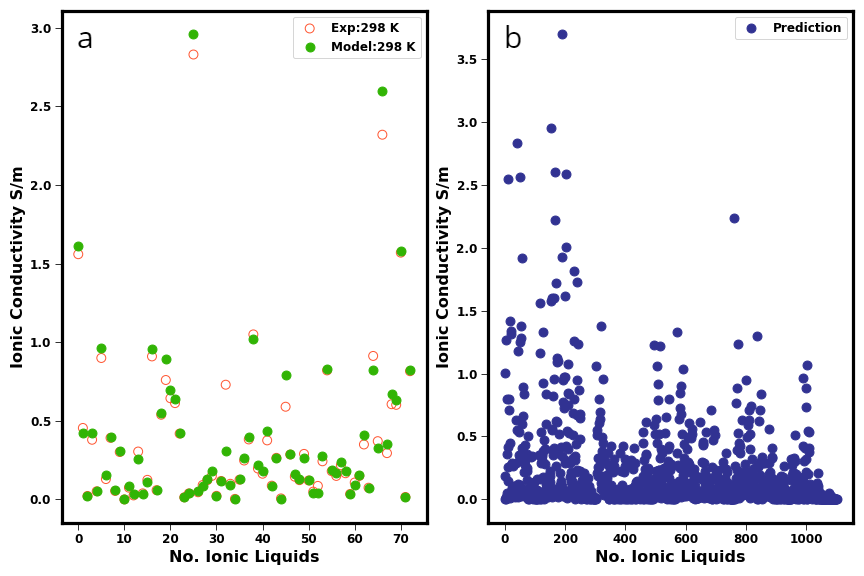Background
Ionic liquids are a class of salts that are liquid at room temperature with several unique and desirable properties such as negligible vapor pressure, environmentally friendly, high thermal and electrochemical stability. Because of these favorable properties, ionic liquids are currently considered a potential replacement for conventional organic electrolytes in Li-ion batteries. However, a significant limitation of ionic liquids is their sluggish transport properties limiting their widespread application in battery technology. This drawback can be tackled by choosing the right ionic liquids based on chemical intuition that could improve transport properties. However, the vast chemical space of ionic liquids for such manipulation could be expensive and unfeasible using experimental and computational simulations. The increased capability of machine learning techniques combined with the availability of experimental data in the open literature for ionic liquids provides an excellent opportunity to develop algorithms to search and discover high-performance ionic liquids suitable for industrial applications rapidly at a low cost.
Summary
To accelerate the discovery of ionic liquids matching key criteria for electrolytes, OSU Researchers have developed a Machine Learning algorithm to search for ionic liquids with high performance. The developed Machine Learning model was able to identify ionic liquids with the highest conductivity (greater than 1 S/m) and able to predict the ionic conductivity for several binary and reciprocal ionic liquid mixtures. Compared to experimental data available in the open literature, the algorithm was able to discover solvents with a performance increase of 27% at room temperature. This accelerated discovery of high-performing ionic liquids could narrow down the search and reduce the overall experimental and computational cost for the industry.
Benefits
- Ability to identify and predict high conductive ionic liquids
- Accelerated discovery of ionic liquids with desirable properties for industrial applications.
- Reduction in effort and resources to generate potential ionic liquids leads
Market Application
- To search and manufacture ionic liquids with high performance targeted for battery applications.
- To identify ionic liquids to be used as solvents.
Highlights
- Machine learning algorithm for accelerated discovery of ionic liquids
- High accuracy & Rapid discovery
- Narrows down chemical search space

Figure 1 (a). Ionic conductivity comparison between experiment (open circle in red) and
model prediction(green) using Feed Forward Neural Network (FFANN) for all those data at 298 K. As seen in the figure the prediction and experimental data are in perfect agreement.
Figure 1 (b). Unique ionic liquid predictions using FFANN for 1102 ionic liquid obtained by combining 29 unique cations and 38 anions at 298 K. The model was able to discover ionic liquid with an increase in ionic conductivity by 27% compared to existing data found in the literature.

Figure 1 (c): Heat map of cation combinations that leads to enhancement in ionic conductivity for binary cation mixtures at 298.0 K. Darker color indicates high chances of generating enhancement in conductivity when the given cations are combined and added with an anion.